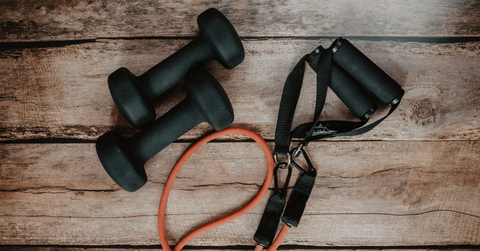Branding and Athletic Gear: How Major Brands Shape the Sports Industry

Sept. 3 2023, Published 1:16 p.m. ET
The sports industry, an ever-evolving behemoth, is greatly influenced by branding, particularly in the realm of athletic gear. Major brands have taken center stage, driving innovation, setting trends, and impacting not just the products we buy, but also how we perceive sports and athleticism at large. The symbiotic relationship between branding and the sports industry has deep historical roots, and its effects permeate to this day, transforming the dynamics of the market and the preferences of the consumers.
Popular platforms like AthleteSite often highlight the influence of big brands on athletic gear, offering insights into how their marketing strategies, product designs, and sponsorships play a pivotal role in shaping consumer perceptions and industry trends.
The Rise of Brand Power
From the swoosh of Nike to the three stripes of Adidas, iconic symbols have become synonymous with athletic prowess, aspiration, and success. These brands have successfully built a narrative around not just performance, but also lifestyle. Investing heavily in R&D, they ensure that the latest technology and design trends are embedded in their products, making them a must-have for athletes and enthusiasts alike.
Endorsements and Athlete Partnerships
One of the primary strategies adopted by major brands is forging partnerships with elite athletes. LeBron James with Nike or Lionel Messi with Adidas are not just partnerships; they're powerful statements. These collaborations do more than just promote products; they narrate stories of hard work, ambition, and success. By wearing the same athletic gear as their sports heroes, consumers feel a sense of connection, an abstract camaraderie that drives brand loyalty.
Branding Beyond Products
Major athletic gear brands today are not just selling products; they are selling experiences. Brands organize marathons, sports camps, and training sessions, allowing enthusiasts to be a part of a larger community. Such initiatives reinforce brand loyalty and create a platform for real-world product testing and feedback.
The Impact on Sports Culture
The influence of branding on sports culture is undeniable. Athletic gear brands have successfully transformed sportswear into everyday wear, blurring the lines between functionality and fashion. Today, it's not uncommon to see sporty sneakers at formal events or athletic tights in casual settings. This cultural shift is a testament to the powerful branding strategies employed by major players in the industry.
Diversification and Niche Branding
With the sports industry being so vast, brands have started to diversify and target niche markets. Whether it's athletic gear specifically designed for yoga enthusiasts, crossfit aficionados, or trail runners, there's a brand catering to every niche. This approach allows brands to be more focused on product development and marketing, ensuring that they meet the unique needs of each segment.
The Role of Sustainability
Modern consumers are more informed and conscious of their purchasing decisions. Recognizing this, major athletic gear brands have incorporated sustainability into their branding narratives. Using eco-friendly materials, ensuring ethical manufacturing practices, and promoting recycling are now crucial elements of brand identity, resonating with a new generation of environmentally-conscious consumers.
Challenges and Criticisms
While branding has greatly propelled the athletic gear industry forward, it's not without its criticisms. Issues of over-commercialization, the authenticity of endorsements, and concerns over manufacturing ethics have often put major brands under scrutiny. Balancing profit motives with genuine commitment to quality, innovation, and ethics remains a challenge.
The Digital Revolution and Athletic Gear Branding

The dawn of the digital age has significantly amplified the influence of branding in the athletic gear domain. Social media, in particular, has become a dominant platform for brands to engage directly with consumers, foster communities, and showcase their products in dynamic ways.
User-generated content, such as reviews and unboxing videos, often shared on platforms like Instagram, YouTube, and TikTok, plays a pivotal role in shaping brand perceptions. When an everyday athlete shares their positive experience with a particular brand or product, it often resonates more deeply with viewers than traditional advertisements. This organic promotion adds a layer of authenticity and trustworthiness to the brand's image.
Furthermore, with the integration of Augmented Reality (AR) and Virtual Reality (VR) technologies, brands can now offer virtual try-ons, allowing users to experience products without physically handling them. Such immersive experiences not only enrich customer engagement but also drive sales by reducing the uncertainty associated with online shopping.
Lastly, data analytics, powered by artificial intelligence, has enabled brands to understand consumer preferences at an unprecedented granularity. By analyzing buying patterns, online searches, and social media interactions, brands can tailor their products, marketing strategies, and narratives to resonate more effectively with their target audience, thus reinforcing their brand's position in the competitive market.
Conclusion
Branding in the athletic gear sector has undeniably reshaped the sports industry, establishing a deep-rooted connection between consumers, athletes, and products. Brands have the power to set trends, influence perceptions, and drive innovation. As the industry continues to evolve, it will be intriguing to witness how branding adapts to changing consumer preferences, technological advancements, and global challenges. Whether you're an athlete, a sports enthusiast, or a casual consumer, the impact of branding on athletic gear is palpable in every product you choose, every story you believe, and every community you become a part of.


